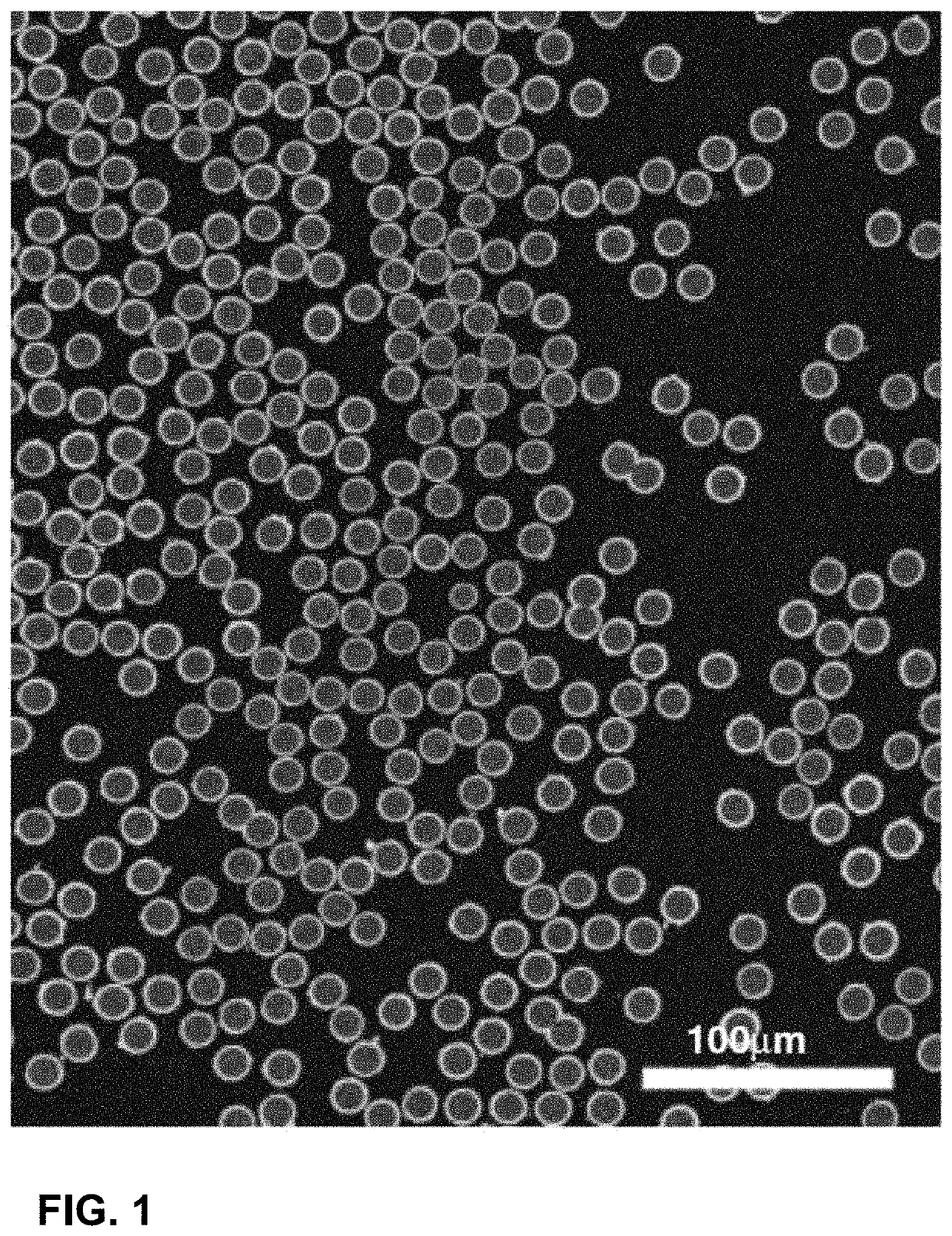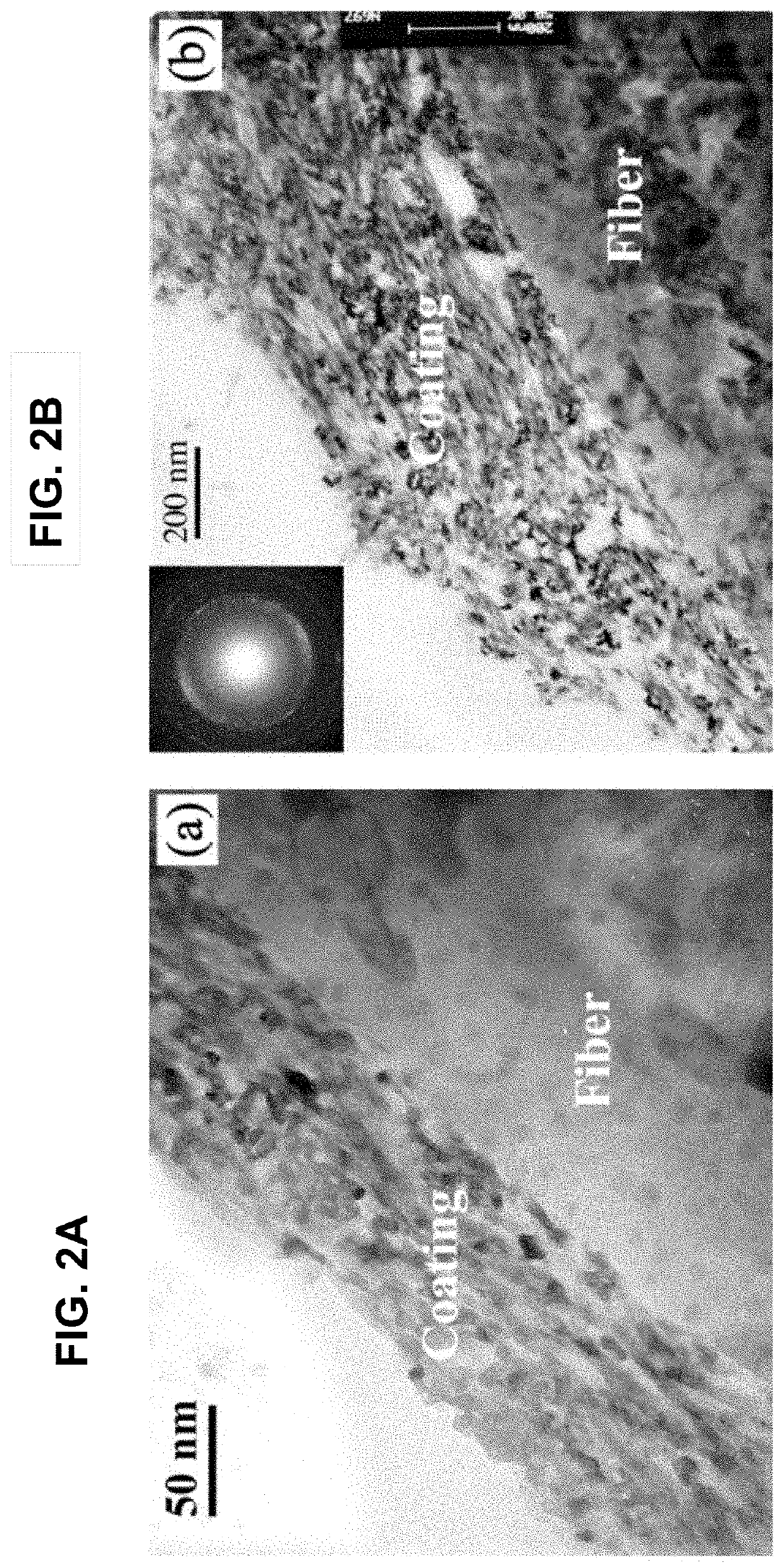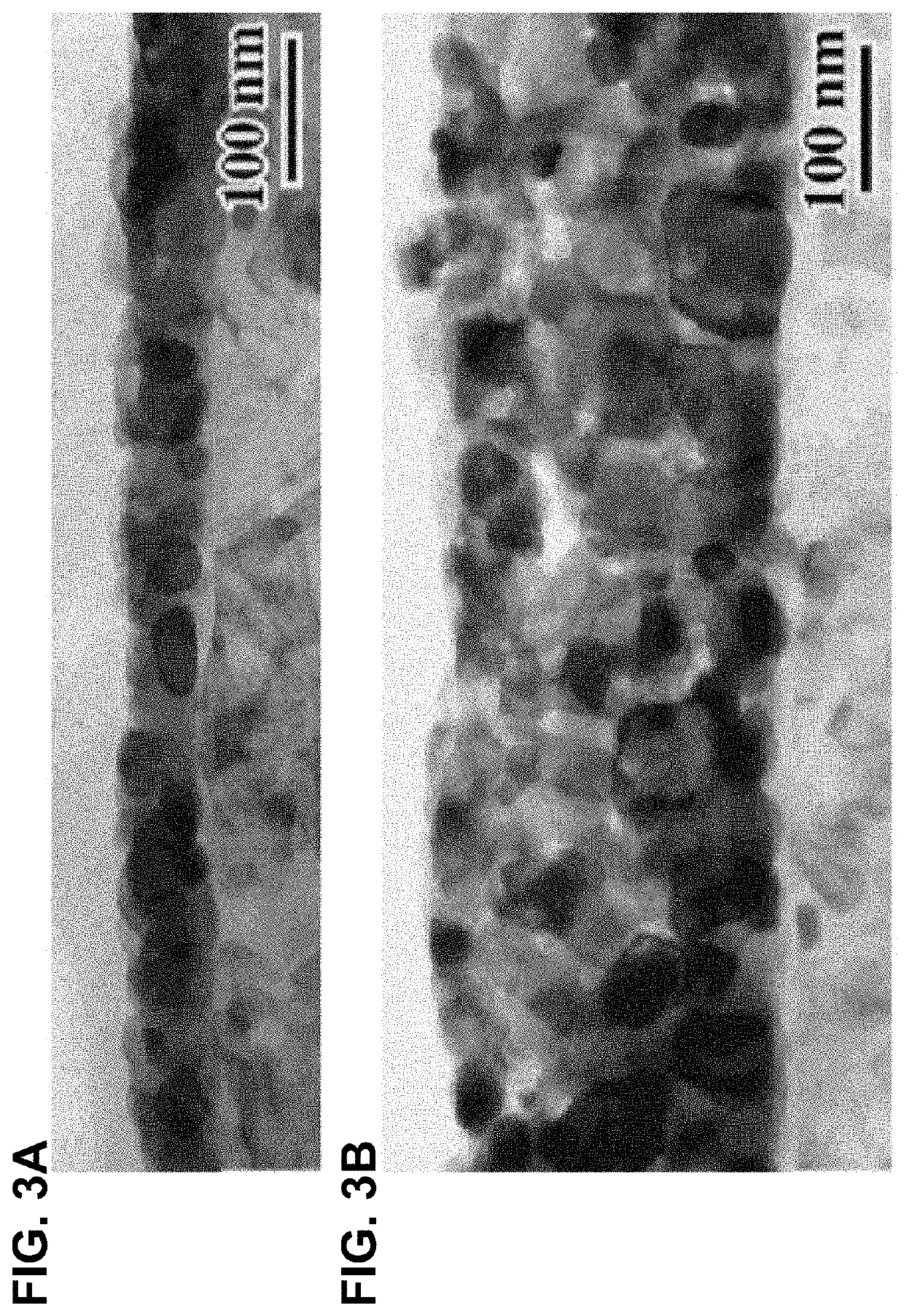Oxidation-resistant fiber coatings and related methods
a fiber coating and fiber technology, applied in the field of composite materials, can solve the problems of inability to oxidize at elevated temperatures, cracks along the matrix/fiber interface, and inherently brittleness and may fail, and achieve the effects of reducing the number of heat treatments
- Summary
- Abstract
- Description
- Claims
- Application Information
AI Technical Summary
Benefits of technology
Problems solved by technology
Method used
Image
Examples
Embodiment Construction
[0046]Ceramic materials are of interest for high temperature applications but are inherently brittle and may fail in a catastrophic manner. A known technique to improve the mechanical properties of ceramics includes reinforcement with high strength fibers to form CMCs. In order to realize the full benefits of fiber reinforcement, the matrix must transfer load to the fibers but become decoupled during fracture so that fibers remain intact and continue to bear a load. In SiC / SiC composites, the load transfer capabilities may be enhanced through boron nitride (BN) and carbon (C) fiber coatings.
[0047]Generally, the fiber coating must be chemically and mechanically stable at high temperature in oxygenated environments. The coating must deflect cracks to maintain composite damage tolerance. While the aforementioned C and BN provide the requisite enhancement of physical properties, they are not oxidation resistant. This restricts the use of current SiC / SiC CMCs because they do not have ade...
PUM
| Property | Measurement | Unit |
|---|---|---|
| Temperature | aaaaa | aaaaa |
| Temperature | aaaaa | aaaaa |
| Time | aaaaa | aaaaa |
Abstract
Description
Claims
Application Information
 Login to View More
Login to View More - R&D
- Intellectual Property
- Life Sciences
- Materials
- Tech Scout
- Unparalleled Data Quality
- Higher Quality Content
- 60% Fewer Hallucinations
Browse by: Latest US Patents, China's latest patents, Technical Efficacy Thesaurus, Application Domain, Technology Topic, Popular Technical Reports.
© 2025 PatSnap. All rights reserved.Legal|Privacy policy|Modern Slavery Act Transparency Statement|Sitemap|About US| Contact US: help@patsnap.com



